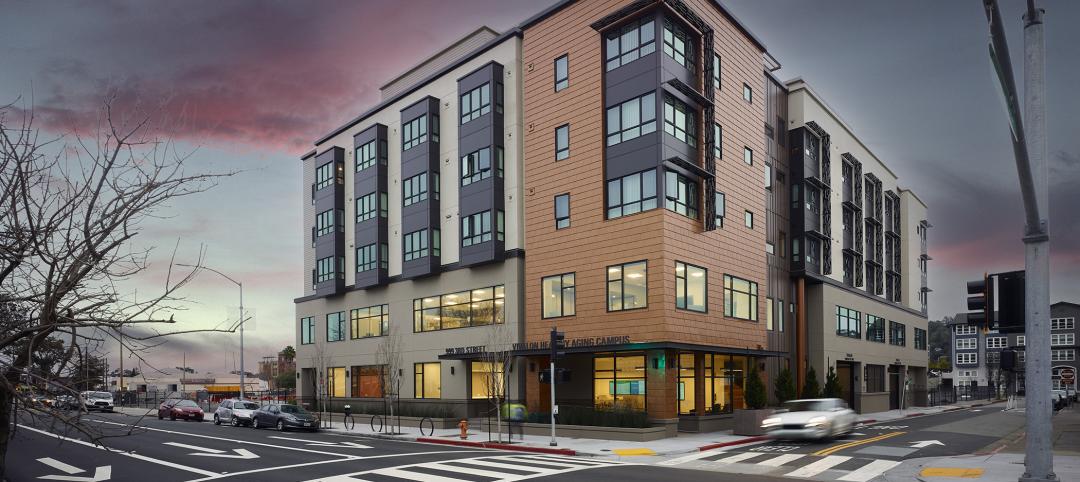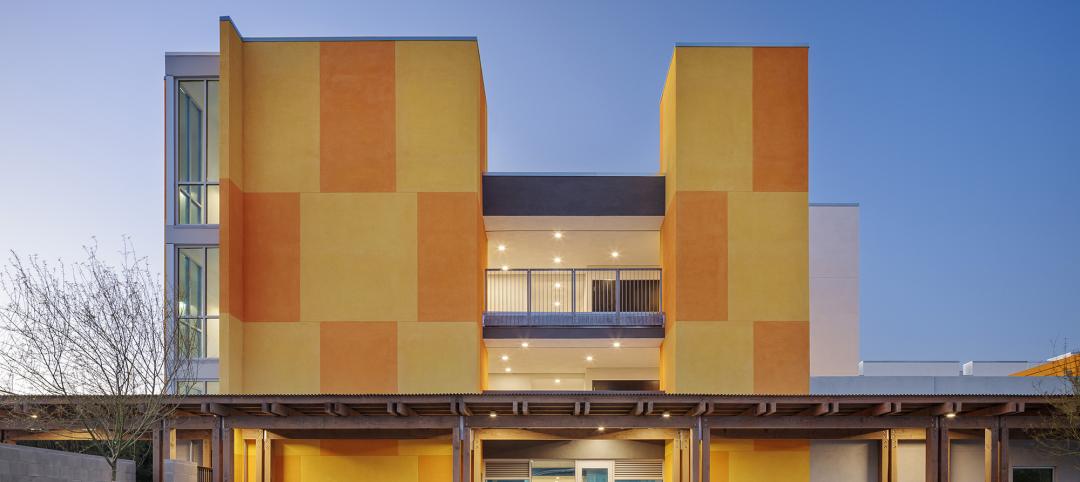Even with recent and growing public support for critically necessary affordable housing in California, developers are finding it difficult to make these projects pencil. They are forced to contend with myriad challenges, from supply chain and labor issues to complex financing and regulatory requirements, that must be handled well before building can actually begin.
It’s no secret that general contractors (GCs) can have tremendous influence over a project’s success in terms of schedule, budget, and overall quality. However, to ensure a project is put on this path, there are a few factors that must be considered. The keys are early involvement, open communication, and an experienced team that understands the intricacies of the affordable housing market.
Early Collaboration with General Contractors
First and foremost, project delivery type matters. Utilizing design-build or design-assist will allow the contractor to be involved in the project from the earliest phase. Bringing the general contractor into the conversation at this juncture provides them with an opportunity to make critical recommendations up front, positively affecting both budget and schedule.
Review the Three S’s: Structure, Systems, and Skin
Once the delivery method is selected and assuming it allows for early collaboration, the GC can carefully review design concepts, focusing on proposed structure type, building systems and exterior skin.
Through detailed and holistic evaluation of a project’s distinct goals and characteristics, the GC will know what enhancements should be made. For instance, they may identify structural solutions that are more readily available or ideally suited to the project. Recommendations might include cold formed steel instead of wood frame or mass timber in place rather than concrete.
Additional considerations include combustible versus noncombustible materials or potential hybrid scenarios. When it comes to the building skin, a GC can evaluate various finish options and assemblies to create the most cost-effective, long-lasting solution. Additionally, they might assess the size, number and style of windows to ensure the right balance of cost and design.
It’s important to note that exterior features, like balconies and sunshades, benefit greatly from early constructability and cost feedback, so these are vital to the overall decision-making process.
Utilizing Virtual Design+Construction
Such early involvement enables the general contractor to leverage its team’s range of in-house expertise to the benefit of the project. Mechanical, electrical, and plumbing (MEP) specialists can ensure systems are designed thoughtfully, while taking the building’s life cycle into account. Additionally, virtual design and construction (VD+C) and prefabrication expertise can greatly consolidate onsite construction time and duration, as well as labor needs, ultimately saving money.
Many building components, including walls, floor systems, roof structures, and electrical systems can be fabricated off site and then assembled onsite. Utilizing VD+C allows the team to meticulously lay out components and systems before construction begins, greatly increasing quality assurance and efficiency. For instance, once the design is coordinated through building information modeling (BIM) software, data can be extracted and robotic layout utilized to transfer critical horizontal and vertical control information within a tenth of the time it takes to use traditional measure-and-mark techniques, and with a higher degree of accuracy.

Alternatively, when the contractor is brought in later, as the project is ready to go to permitting, any opportunity for early collaboration and subsequent ability to make substantial design enhancements is lost. The GC can only price out the project and utilize bidding at this point, which can be limiting and affected by potential labor and/or supply chain shortages.
Consider Supply Chain Delays
While the Coronavirus pandemic appears to be in the rearview, the industry is still grappling with supply chain issues. In particular, many critical electrical components are delayed, with some requiring more than 80 weeks lead time. This necessitates that orders must be placed much earlier than would have been typical just a few years ago to avoid project delays, and in turn cost increases. Such consequences can be averted entirely when the contractor is able to collaborate on the project from the beginning.
Experienced Partners in Affordable Housing
Building an affordable housing project requires deep knowledge in areas one might not typically consider “construction.” Thus, it’s important that the GC team you select is experienced, well-informed in areas including financing and regulatory requirements, and maintains good relationships with the various trade partners required to get these projects off the ground.
Financing and Compliance
In California, almost all affordable housing development deals follow the same timeline with the California Tax Credit Allocation Committee (CTCAC) administering the state’s Low-Income Housing Tax Credit Program. GCs need to be intimately familiar with this financing mechanism, as it firmly dictates necessary compliance requirements. Navigating the multiple agencies involved and various types of documentation is a skill in and of itself, that again, must happen at the front end of the project.

Insurance
Current pressures in the property insurance marketplace have had a major effect on multifamily development. For example, both property and builder’s risk insurances can vary wildly when comparing combustible versus noncombustible construction types. Contractors should have a keen pulse on the market so they can make informed—and early—recommendations on a building’s materials. This is important both during construction, when the project is most high-risk and insured under builder’s risk, as well as in terms of building life cycle costs.
Regulatory
Frequent new regulations and updated code requirements can greatly impact how a project must be built, potentially adding scope and budget if not planned accurately. From identifying necessary sustainability features to meeting labor mandates, contractors need to stay informed and have a deep understanding of what is required before actually embarking on a project.
Labor Market
Ask any contractor about issues the industry is facing and shortage of labor is sure to be high on their list. This general sentiment is underscored in the affordable housing market developments that utilize low-income tax credits as part of the capital structure, as well as by the fact that each project follows the same CTCAT award rounds. This puts many projects on the same timeline each year and greatly limits labor competition, forcing subcontractors to pick and choose which projects they pursue.
Those general contractors that invest in building deep relationships with their local trade contractor partners will set themselves apart. Providing training and making sure these partners feel heard and seen can go a long way in ensuring a talented and reliable trade pool will choose to work on your projects when the time comes.
Overall, affordable housing projects are major investments with long timelines that ultimately have a remarkable impact on their communities. To be successful, developers need to assemble a qualified, collaborative team of professionals as early as possible. Doing so will surely result in providing quality homes to residents in-need quickly and efficiently.
Related Stories
Multifamily Housing | Jun 3, 2024
Grassroots groups becoming a force in housing advocacy
A growing movement of grassroots organizing to support new housing construction is having an impact in city halls across the country. Fed up with high housing costs and the commonly hostile reception to new housing proposals, advocacy groups have sprung up in many communities to attend public meetings to speak in support of developments.
MFPRO+ News | May 28, 2024
ENERGY STAR NextGen Certification for New Homes and Apartments launched
The U.S. Environmental Protection Agency recently launched ENERGY STAR NextGen Certified Homes and Apartments, a voluntary certification program for new residential buildings. The program will increase national energy and emissions savings by accelerating the building industry’s adoption of advanced, energy-efficient technologies, according to an EPA news release.
MFPRO+ News | May 21, 2024
Massachusetts governor launches advocacy group to push for more housing
Massachusetts’ Gov. Maura Healey and Lt. Gov. Kim Driscoll have taken the unusual step of setting up a nonprofit to advocate for pro-housing efforts at the local level. One Commonwealth Inc., will work to provide political and financial support for local housing initiatives, a key pillar of the governor’s agenda.
Senior Living Design | May 16, 2024
Healthy senior living campus ‘redefines the experience of aging’
MBH Architects, in collaboration with Eden Housing and Van Meter Williams Pollack LLP, announces the completion of Vivalon’s Healthy Aging Campus, a forward-looking project designed to redefine the experience of aging in Marin County.
Affordable Housing | May 14, 2024
Brooklyn's colorful new affordable housing project includes retail, public spaces
A new affordable housing development located in the fastest growing section of Brooklyn, N.Y., where over half the population lives below the poverty line, transformed a long vacant lot into a community asset. The Van Sinderen Plaza project consists of a newly constructed pair of seven-story buildings totaling 193,665 sf, including 130 affordable units.
Mass Timber | May 8, 2024
Portland's Timberview VIII mass timber multifamily development will offer more than 100 affordable units
An eight-story, 72,000-sf mass timber apartment building in Portland, Ore., topped out this winter and will soon offer over 100 affordable units. The structure is the tallest affordable housing mass timber building and the first Type IV-C affordable housing building in the city.
Senior Living Design | May 7, 2024
Living community opens for seniors seeking affordable housing
San Diego-based nonprofit affordable housing developer Community HousingWorks (CHW) celebrates the opening of Puesta del Sol Apartments, a new development with 59 apartments for adults 55 years and older.
MFPRO+ Special Reports | May 6, 2024
Top 10 trends in affordable housing
Among affordable housing developers today, there’s one commonality tying projects together: uncertainty. AEC firms share their latest insights and philosophies on the future of affordable housing in BD+C's 2023 Multifamily Annual Report.
MFPRO+ News | Apr 29, 2024
World’s largest 3D printer could create entire neighborhoods
The University of Maine recently unveiled the world’s largest 3D printer said to be able to create entire neighborhoods. The machine is four times larger than a preceding model that was first tested in 2019. The older model was used to create a 600 sf single-family home made of recyclable wood fiber and bio-resin materials.
MFPRO+ New Projects | Apr 16, 2024
Marvel-designed Gowanus Green will offer 955 affordable rental units in Brooklyn
The community consists of approximately 955 units of 100% affordable housing, 28,000 sf of neighborhood service retail and community space, a site for a new public school, and a new 1.5-acre public park.


















